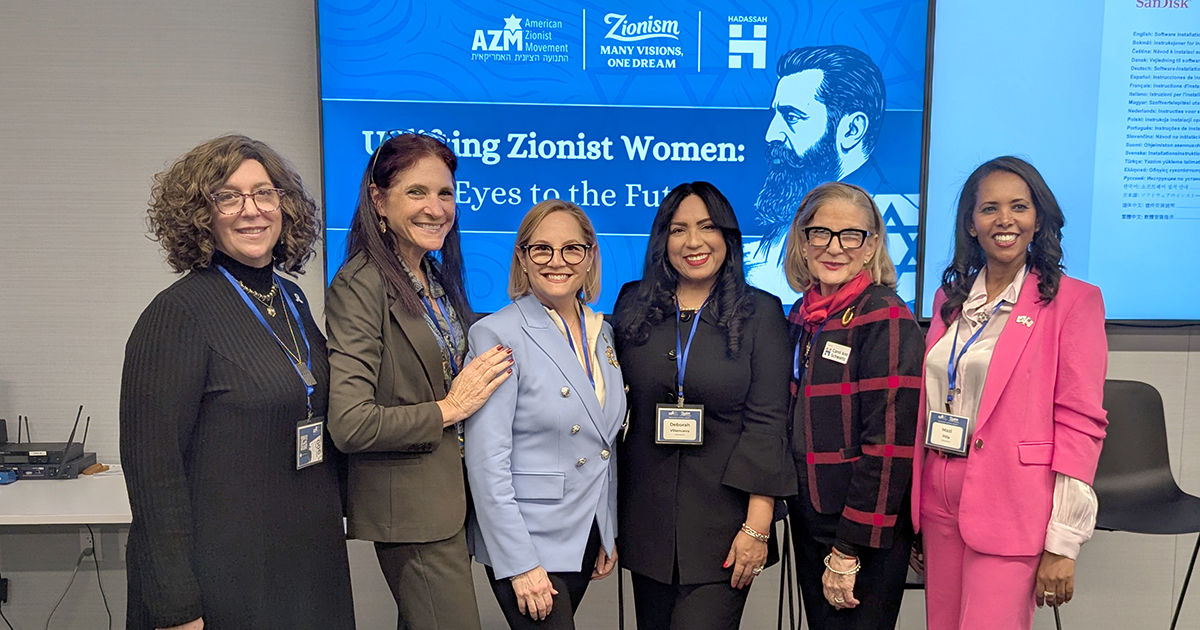February is the shortest month of the year, but certainly not short on significance to Hadassah. This month, let’s reflect on both Hadassah’s beginnings and the life of the woman who started it all — Hadassah’s pioneering founder, Henrietta Szold.
On February 13, we mark Szold’s yahrzeit, the anniversary of her passing. From promoting education among immigrants to bringing healing to the people of Palestine and reshaping Zionism to affording American Jewish women opportunity, Szold left a legacy that epitomizes philanthropy and innovation. Every February, Israelis honor Szold for dedicating her life to providing safe haven to children fleeing the Nazis during what began as Mother’s Day but has been renamed Family Day to be more inclusive. Today, our Youth Aliyah villages continue to help young refugees and other at-risk youth.
Here are just a few facts about Szold — some you know, some you may not!
- For months, Szold suffered from psychogenic blindness; she was not able to see, though she presented no physical evidence of tissue damage. It was when Szold visited pre-state Israel that she was able to overcome this condition, after witnessing children suffering from trachoma.
- Szold created Tipat Chalav (A Drop of Milk), well-baby clinics that distributed pasteurized milk in Jerusalem to expectant mothers, infants and young children. Over time, this initiative has grown into a nationwide system of family health centers.
- In recognition of Szold’s work with Aliyat HaNoar in 1933 to bring Jews back to Israel despite British restrictions, the Palmach pre-state paramilitary brigade of the Haganah named a ship after her.
- Dry Dock Street in New York City was renamed Szold Place during a ceremony on Purim in 1951 to commemorate Szold’s role in fostering Jewish life. While the street may not be widely known, a space dedicated to a woman and a non-New Yorker is unique. Public School 134 at Szold Place has been named PS134 Henrietta Szold.
- In 1898, the Federation of American Zionists elected Szold as the only female member of its executive committee. She was also the only woman on the Provisional Executive Committee for General Zionist Affairs during World War I.
- At a time when women typically did not recite Kaddish or participate in a minyan, Szold insisted on saying the Mourner’s Prayer for her mother, refusing a male friend’s offer to do it.
- Though she held the title and received the salary of secretary at the Jewish Publication Society (JPS), Szold in fact served as translator, indexer, fact checker, proofreader, statistician, administrator and editor, overseeing the publication of 87 books.
- Szold’s sister, Bertha, was a pioneer in her own right. She was the first woman member of the Baltimore City School Board, and she pressed for the inclusion of working women in Hadassah, where she became vice president.
Szold looked to the members of Zionist women's study groups in New York to be the trailblazers that would help create the Jewish state. On Purim, on February 24, 1912, 38 women formed the Hadassah Chapter of Daughters of Zion, electing Szold as president. The organization’s name was changed to Hadassah, The Women's Zionist Organization of America in 1914. Szold called for practical Zionism, proactive work to heal Palestine.
Here are some notable moments from throughout Hadassah’s history:
- 1913: Two Hadassah nurses travel to Palestine to provide maternity care and treat trachoma.
- 1918: Hadassah establishes the American Zionist Medical Unit (AZMU) to create permanent health and welfare programs in postwar Palestine. It was renamed the Hadassah Medical Organization in 1924.
- 1933: Youth Aliyah is founded, and Szold is its first director.
- 1940: Hadassah becomes Young Judaea’s co-sponsor.
- 1942: Hadassah supports the American war effort during WWII by establishing blood banks, selling war bonds and volunteering.
- 1948: The State of Israel is established and the Hadassah Medical Organization cares for wounded soldiers in Jerusalem.
- 1952: Hadassah breaks ground for its new medical center in Ein Kerem; Hadassah Hospital Ein Kerem officially opens on June 6, 1961.\
- 1967: Hadassah Associates is founded to give American men the opportunity to support Hadassah’s work.
- 1975: Hadassah rededicates a rebuilt and renovated Hadassah Hospital Mount Scopus.
- 2001: Hadassah is recognized as a non-governmental organization by the UN Economic and Social Council, enabling Hadassah to have international reach.
- 2005: Hadassah’s hospitals are nominated for a Nobel Peace Prize for building bridges to peace through medicine.
- 2019: Congress passes and the US president signs the Never Again Education Act into law. Hadassah was one of the leading nonprofits championing this bill.
- 2023: The Hadassah Medical Organization announces a 90 percent success rate for its innovative experimental treatment for the cancer multiple myeloma.
Learn more
Henrietta Szold, Hadassah’s Founder, Celebrated in Israel Today



.svg)






